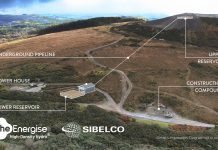 GridBeyond, possibly more well known among The Energyst’s readers as a energy flexibility company not only now offers power purchase agreements for both suppliers and corporate users. Not only providing PPAs but integrating them within the wider whole of energy management including flexibility, battery storage and energy efficiency to provide a powerful tool for an organisation to realise its net zero ambitions. Tim McManan-Smith spoke with GridBeyond’s Neil Garland
GridBeyond, possibly more well known among The Energyst’s readers as a energy flexibility company not only now offers power purchase agreements for both suppliers and corporate users. Not only providing PPAs but integrating them within the wider whole of energy management including flexibility, battery storage and energy efficiency to provide a powerful tool for an organisation to realise its net zero ambitions. Tim McManan-Smith spoke with GridBeyond’s Neil Garland
Are PPAs becoming more cost effective?
I think it is becoming more and more sensible as a way of purchasing power. So you’ve got the levelized cost of electricity is one thing to be aware of, because that’s the cost that I need to make sure this investment is going to be profitable and I’m not losing money. But the cost of build these projects generally is coming down as the cost of solar panels cost of wind turbines, the raw materials, I know, there’s inflation, but over time it’s coming down.
Given recent price instability, low during Covid and high following the invasion of Ukraine, a corporate PPA that is in line with the current market, maybe a slight premium, whichever it is, is ticking a number of boxes is giving you long term hedge, it’s giving them Regos and other tangible benefits, such as marketability, things like that.
If you’re an off taker, you can for example, buy because they’re probably selling the suite of services there, you can buy your part of your requirements for a corporate PPA, which is a form of hedge, you throw a battery in there, that will also open certain doors as well, and they’ll give you revenue and again, could be considered to be a hedge as well.
A virtual lead can help the both the seller and the buyer. If you have a PPA and you’re not managing your profile, then you’re missing an opportunity, because this bill will be there nonetheless. So you may as well have your slice of the pie, if you can get it and be involved in this imbalance trading accuracy with a company like ourselves to manage that profile and price risk. Because if you’re not, you’re paying for somebody else to do it.
Connection to the grid
If you have a conversation with your DNO around more capacity, and you’ve been almost knocked off your chair, because the price they quoted to get the reinforcement works, to get the capacity you need, come talk to us, because what we can help you out with effectively is installing a battery, or possibly onsite generation, which may allow you to live with less capacity. You generate your own energy, or the very least you load the battery up with surplus power from the grid when you don’t need it. We’ve heard some horror stories of, you know, 10 years away, before they get the capacity and things like that.
Net Zero goals
I think the argument that we’re making is to get to your net zero goals, you can’t just do a PPA on its own, if you’re going to become truly carbon free, you need to look at several things. Study the data, look at energy efficiency, have people look at sites and ask, ‘how can I get the site more efficient and invest in more efficient equipment, insulation & examine our processes?’.
After reducing, the next logical step is can you generate. Not every company could do this of course, because you need to have the room for it, or the roof space. If you’re a small office in London, it’s not for you.
What are the two things might be complementary to a PPA? Self-generation and a good battery. So as the natural direction of travel is to become greener, you have to go down the PPA route. Because that’s the only authentically green way you can go. The onsite renewable asset can be funded by a third party such as GridBeyond where it is paid for by a PPA that sells the power to you via a PPA. The use of a battery makes the whole thing more effective because of the low value of exporting surplus power back to the grid. “We will fund the project, we will design it, build it and make sure you’ve got all the relevant grid connections and things like that. And effectively, we will give you the benefits of the energy at a certain price,” says Garland.
As well as energy efficiency, self-generation, private wire agreements and PPAs ait’s well with optimising these for revenue though energy flexibility.
Tapping into some of these very established schemes out there, capacity markets, so before, you’ve got FFR, STOR various different ones, we can effectively work with you to make sure you can aggregate your supplies, along with others to tap into some of these very, very well paid schemes as one thing straightaway. some people might be slightly put off by the idea of interfering with, you know, their, their fridges, or people or whatever systems they got, but these things are managed very, very well.
The Energyst, GridBeyond & AstraZeneca are running a webinar on Corporate PPAs within a wider net zero context on 16th April. Click here to register. Join us at 11am for an insightful hour of discussion.



